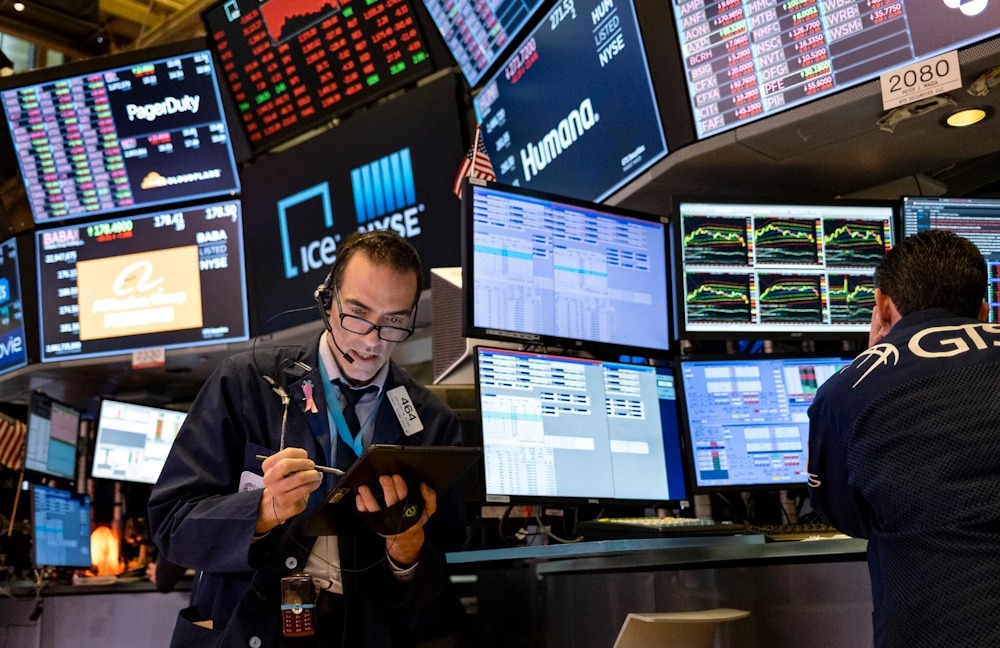
S&P 500 finishes slightly up, just shy of reaching a new all-time high. The S&P 500 approached a new record on Thursday, marking the apex of a remarkable recovery from the lows experienced in April. This resurgence occurred despite a myriad of concerns, including trade disputes, geopolitical tensions, and persistent inflationary pressures. The broad market index increased by 0.8% to finish at 6,141.02, resulting in a weekly gain of 2.9% and positioning it only a few points shy of the intraday all-time high reached in late February of 6,147.43. The Nasdaq Composite increased by 0.97% to 20,167.91, positioning itself just short of a new record high. The Dow Jones Industrial Average increased by 404.41 points, representing a rise of 0.94%, reaching a level of 43,386.84.
Equities advanced to their session peaks following comments from White House spokesperson Karoline Leavitt, who downplayed the impending July tariff deal deadlines that have been casting a shadow over the markets. “The deadline is not critical,” stated Leavitt. “It may be possible to extend it, but ultimately, that decision rests with the president.” July 8 marks the implementation of the liberation day tariffs following a 90-day suspension, while July 9 serves as the cutoff for reaching an agreement with the EU to prevent the imposition of 50% tariffs. Leavitt’s remarks reinforced a primary rationale for the unexpected recovery from the market’s nadir in April: that President Donald Trump would ultimately refrain from enacting those substantial “liberation day” tariffs, which he ultimately deferred after they caused significant market turmoil.
Robust corporate earnings, a resilient labor market, and a resurgence in the artificial intelligence sector have collectively played a significant role in the recovery of U.S. equities. The S&P 500 has increased by over 27% from its intraday low for the year, following a near entry into bear market territory amid heightened tariff concerns in April. Following the round trip, the benchmark has increased by over 4% for 2025 to date, recovering some of the optimism surrounding the economy and Trump policies that propelled it to a new high on February 19. “The markets are looking forward, seeing lower interest rates, less regulation in the banking sector, a shift from austerity to stimulus in Europe, and a less biting inflation and tariff environment,” stated Jamie Cox, managing partner at Harris Financial Group. “This certainly does not align with the stagflation narrative we have been prepared to expect.”
On Thursday, the broad market index experienced an uplift, largely driven by the contributions of major technology firms, consistent with their role in the ongoing market recovery. Notably, Nvidia, a key player in the artificial intelligence sector, saw an increase of 0.5%, reaching a new all-time high. Meta Platforms experienced an increase of over 2%, whereas Alphabet saw a rise of 1.7%. Nvidia shares have surged nearly 80% since their April low, as concerns regarding Chinese competition and a deceleration in AI spending have been shown to be unfounded. The Nasdaq 100, with its emphasis on technology, reached a new peak earlier this week, propelled by the performance of semiconductor stocks.
Geopolitical risk that heightened concerns on Wall Street has also diminished in recent days, with the initially tenuous ceasefire between Israel and Iran thus far maintaining its stability. On Wednesday, Trump indicated that a meeting between U.S. officials and Iran is expected to take place next week. Oil prices have experienced a significant decline this week following an initial increase, alleviating worries regarding inflation. On Thursday, investors were presented with further evidence indicating that the economy continues to exhibit stability. For the week ending June 21, initial jobless claims decreased to 236,000, falling short of the Dow Jones consensus estimate of 244,000.
